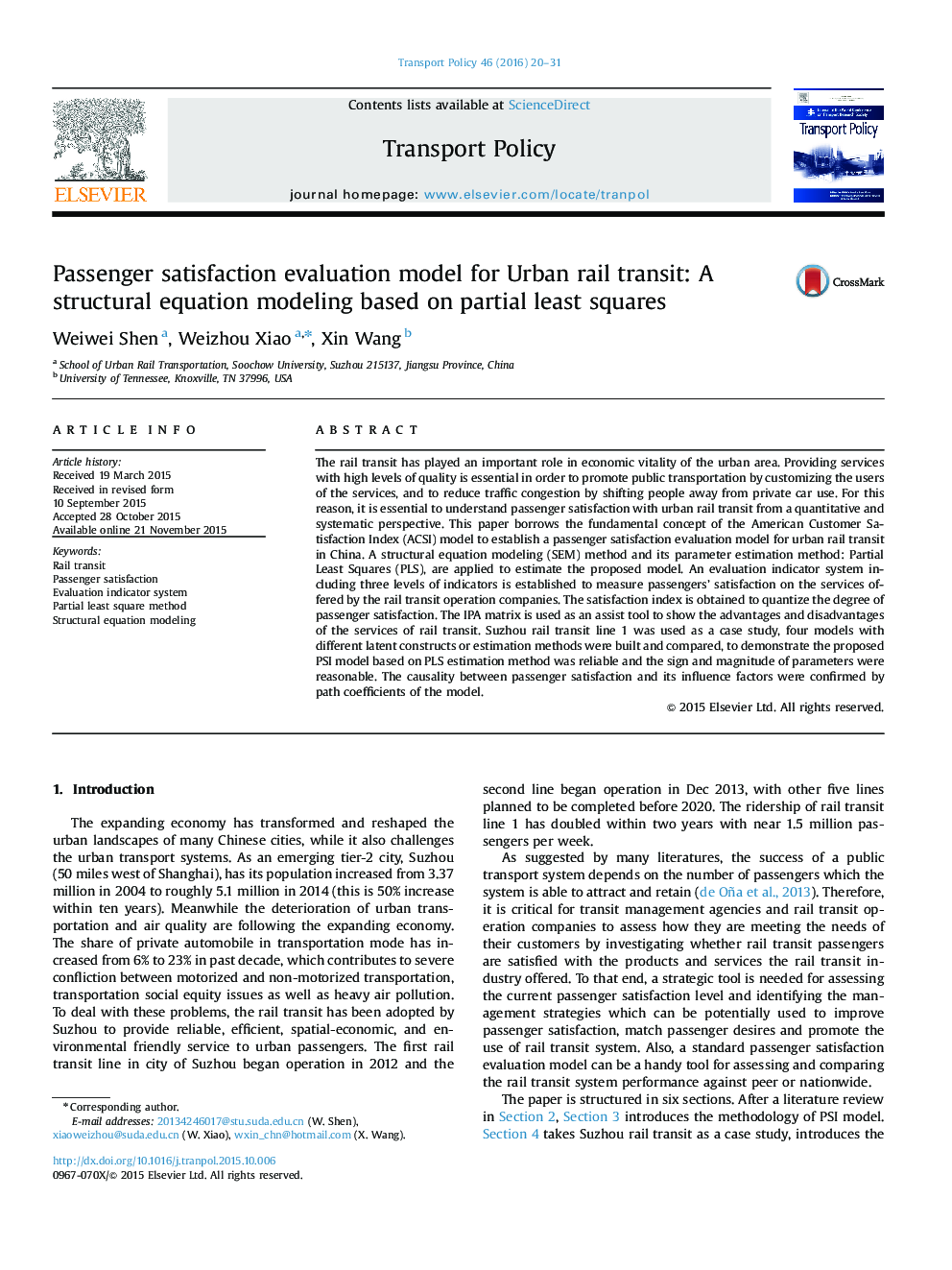| کد مقاله | کد نشریه | سال انتشار | مقاله انگلیسی | نسخه تمام متن |
|---|---|---|---|---|
| 1064796 | 1485831 | 2016 | 12 صفحه PDF | دانلود رایگان |
• A satisfaction evaluation methodology is raised to assess rail transit performance.
• The superiority of PLS estimation method of SEM compared with LISREL is discussed.
• Satisfaction index is obtained to quantize the degree of passenger satisfaction.
• Causality between passenger satisfaction and its influence factors are confirmed.
• Problems in rail transit service and detailed improving countermeasures are given.
The rail transit has played an important role in economic vitality of the urban area. Providing services with high levels of quality is essential in order to promote public transportation by customizing the users of the services, and to reduce traffic congestion by shifting people away from private car use. For this reason, it is essential to understand passenger satisfaction with urban rail transit from a quantitative and systematic perspective. This paper borrows the fundamental concept of the American Customer Satisfaction Index (ACSI) model to establish a passenger satisfaction evaluation model for urban rail transit in China. A structural equation modeling (SEM) method and its parameter estimation method: Partial Least Squares (PLS), are applied to estimate the proposed model. An evaluation indicator system including three levels of indicators is established to measure passengers’ satisfaction on the services offered by the rail transit operation companies. The satisfaction index is obtained to quantize the degree of passenger satisfaction. The IPA matrix is used as an assist tool to show the advantages and disadvantages of the services of rail transit. Suzhou rail transit line 1 was used as a case study, four models with different latent constructs or estimation methods were built and compared, to demonstrate the proposed PSI model based on PLS estimation method was reliable and the sign and magnitude of parameters were reasonable. The causality between passenger satisfaction and its influence factors were confirmed by path coefficients of the model.
Journal: Transport Policy - Volume 46, February 2016, Pages 20–31
